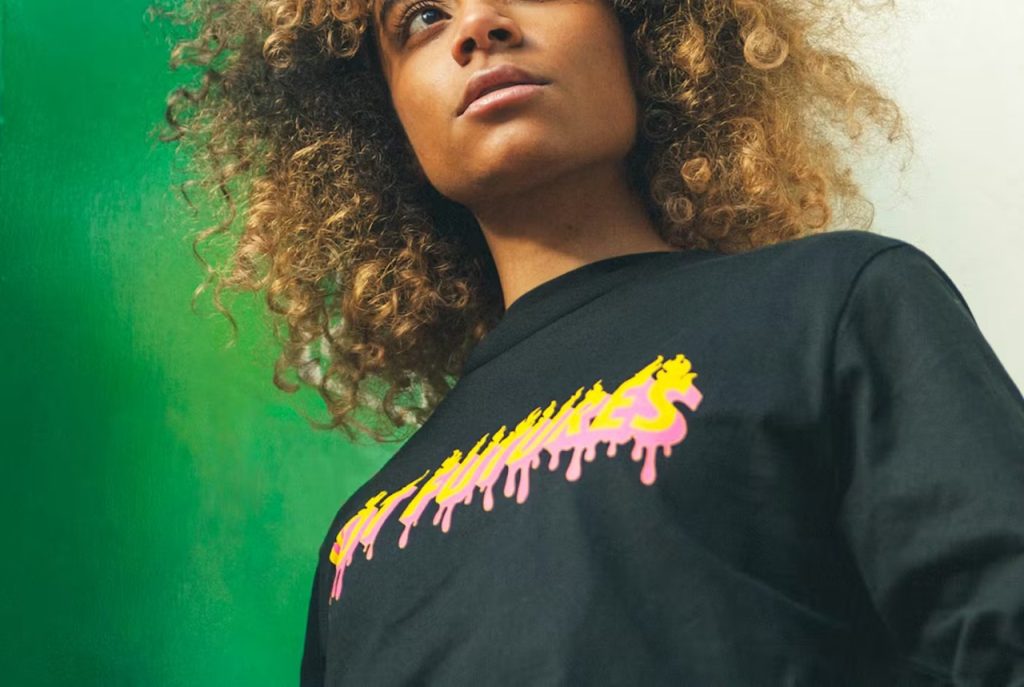Screen Printing
A very popular method for producing personalised garments, screen printing produces excellent quality, long-lasting results and is great value for large volume orders from 20 to 20,000.
Screen Printing
A very popular method for producing personalised garments, screen printing produces excellent quality, long-lasting results and is great value for large volume orders from 20 to 20,000.
A very popular method for producing personalised garments, screen printing produces excellent quality, long-lasting results and is great value for large volume orders from 20 to 20,000.
It’s better suited to artwork with spot colours as opposed to photographs or full colour prints with gradients. A separate screen is required for each colour in the design, so, the fewer colours in your design, the less it costs to print. When printing onto coloured garments a base layer is required to ensure the print is bright and vibrant.


Different types of screen printing:
There are a number of different types of screen printing; at ICON we will always try to recommend the most suitable print method for your artwork.
The primary differences in screen printing are not found in the method but in the types of inks used and the effects that they produce. One of the most commonly used inks in screen printing is plastisol ink which uses spot colours; if your design is full colour or if you want to achieve a different feel a different print method might be more suitable. We will always recommend the most suitable print method once we’ve seen your artwork.
At ICON Printing we use 3 automatic and 2 manual flatbed screen printing machines capable of printing around 75,000 garments a week.
1. Plastisol Ink
Plastisol is a suspension of PVC particles in a plasticizer (a chemical additive that increases flexibility). It is cost effective and durable and produces bold and crisp results. The ink sits on top of the fabric producing meaning the print colours are bright and vibrant.
The inks can be easily matched to any Pantone PMS numbers.
2. Waterbased Inks
Being water-based, these inks produce softer & more breathable print results than plastisol inks, as they offer more penetration of the fabric, but can only be used on white or light colour garments.
Waterbased ink is a great option for those looking for eco-friendly and sustainable print solutions.
3. Four colour process (CMYK)
In this process a full colour photo or image is taken and broken down into its four consistent colours: cyan, magenta, yellow, black, which are then mixed in particular percentages to create a wide range of colours. This process works best on white garments as printing onto darker garments will require the use of additional colours.
This process requires us to send your artwork away in order to calculate the number of colours and screens required. We will also need to see your artwork in order to provide an accurate quotation. Note: We need to separate the colours in your artwork and a different screen will need to be used for each colour.
4. Halftone Printing
This process involves printing a single colour or multiple colours in gradients. It’s great when you want to produce the illusion of multicolour printing without the expense of actually doing it.
Again we need to see your artwork in order to provide an accurate quotation.
5. Discharge inks
These process works by affecting the dyes that already exist in a garment by bleaching it out and replacing it with your chosen colours. Discharge inks produce crisp results that feel much softer than plastisol printing. The downside is that it’s harder to match Pantone PMS colours.
- Design considerations for screen printing
- Colours: Spot colours
- Pantone colour matching: yes
- Artwork type: vector or raster graphics
- File formats: .ai, .eps, .pdf
- Convert all strokes to paths or outline any strokes before submitting artwork.
- Convert all text to outlines in case we don’t have the font that you used on file.
- Ensure artwork is at least 100% of the intended printed area.
- We can print up to 5mm from the seams and no higher than the bottom of the collar.